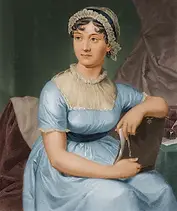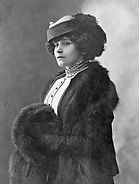About
Despite existing in a space where intellectual property is paramount, there have been countless instances throughout time of women literary figures having their work misattributed. In more frequently discussed historical instances, this misconstruction functions as a shield of sorts, from the sexist judgements and expectations of society, typically taking the form of a male pseudonym. Other times, this involves outright theft. The development of In The Margins aims to investigate the prevalence, motivations behind, and lasting repercussions of this form of erasure.
There were an immense number of societal pressures for women to navigate cultural standards in the 18th and 19th century, and even more so in the literary world. Due to the judgement and barriers for women to publish, there are many instances of women adopting male aliases or using pseudonyms to disguise their true identifies. Women like the Brontë sisters, Louisa May Alcott, and Jane Austen famously used this loophole to publish their works seamlessly, later disclosing their true names to claim their work. However, for every woman who successfully reclaimed her authorship, countless others remained in the shadows. Some women were less bold, keeping their craft confined to a diary or journal, merely sharing with those closest to them— some of whom ultimately betrayed that trust. In The Margins focuses on these women, whose voices were not only silenced but whose creations were actively stolen and attributed to others.
Women have long been considered merely muses to their male artist counterparts when there is typically much more to the story. This muse trope is a way to minimize the substance and capabilities of women in creative fields. By merely attributing their position as influence, these women have their deserved credibility stripped from them. More often than not, these female muses were coerced into conceding their names or plainly plagiarized from. The women explored in In The Margins include Zelda Fitzgerald, whose writing was directly used by her husband, F. Scott Fitzgerald; Margarete Steffin, a crucial but overlooked contributor to Bertolt Brecht’s work; Sidonie-Gabrielle Colette, whose early works were initially published under her husband’s name; and Dorothy Wordsworth, whose poetry and prose were adopted by her brother, William Wordsworth.
These four women are not the only examples of this mistreatment, they are merely a case study of a worldwide issue and reflective of a broader pattern of gendered erasure. Fitzgerald in the United States, Steffin in Germany, Colette in France, and Wordsworth in England, this plagiarism is undeniably systemic and beyond borders. Though, it is important to acknowledge that these are all white women; the scope of this issue is certainly not limited to those living in the geographic and cultural landscape of canonical Western literary traditions. Importantly, the focus of white women is not to imply that they were the only ones affected by literary theft or marginalization, but rather because their stories are somewhat more accessible through the historical record. The contributions of women of color have been even more systemically suppressed due to the compounded effects of racism and sexism, leading to a lack of archival material. The inequality they faced is often even more severe. Acknowledging this limitation is essential, as it reflects the broader structures of power that have long shaped whose stories get told— and preserved— in literary history.
Though there will never be penance enough, In The Margins is designed to spotlight these women not only as brilliant individuals but also parts of a widespread injustice by systemic erasure. By telling the stories behind the stories, the aim is to both add to the context of these works as well as honor the women whose names were never discovered and were lost within history.
Austen, C. (ca. 1810). Jane Austen [Portrait]. National Portrait Gallery, London. Gilbert, S. M., & Gubar, S. (2000). The madwoman in the attic: The woman writer and the nineteenth-century literary imagination. Yale University Press. Louisa May Alcott's Orchard House. (n.d.). Louisa May Alcott [Photograph]. Tolentino, C. (2025, February 24). The Nine Greek Muses: Goddesses of Inspiration. History Cooperative. Unknown artist. (n.d.). Dorothy Wordsworth [Portrait].



Portrait of the Brontë sisters, Charlotte, Emily, and Anne
Portrait of Louisa May Alcott
Portrait of Jane Austen




Portrait of Dorothy Wordsworth
Portrait of Zelda Fitzgerald
Portrait of Margarete Steffin
Portrait of Sidonie-Gabrielle Colette